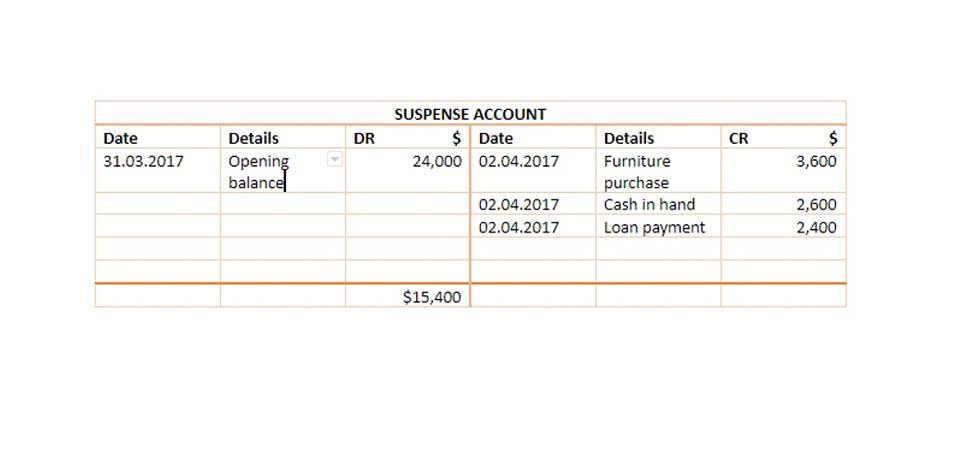
As they advance, accountants may move into senior positions such as manager or director. Partners are not just focused on the firm’s financial success; they also prioritize the well-being of their team members. They foster a culture of excellence and collaboration, creating an environment where accountants can thrive and unleash their full potential. Partners are mentors, guiding their team members towards professional growth and providing them with opportunities to shine.

Profit-Sharing Ratio
- The accounts of the partnership firm differ from that of the proprietorship.
- In addition, the entity, even if it is a partnership, cannot act as a fiduciary; for example, it cannot be a bank or insurance company and use SME rules.
- Shared risk in a partnership allows for the burden to be distributed among multiple individuals, reducing the pressure on any one person.
- Partnership accounting is essential for the smooth operation of any business involving multiple partners.
Their role partnership accounting requires exceptional leadership skills to inspire and motivate employees towards achieving the firm’s objectives. They are expected to provide strategic advice to clients, leveraging their skills to suggest sustainable financial solutions. Regular updates on the latest industry developments and continuing education enhance their proficiency. They possess the ability to see beyond the present and envision a future where the firm thrives. Their leadership skills are honed through years of experience and a deep understanding of the industry. They inspire their team members, motivating them to achieve greatness and surpass their own expectations.

Equity Partners
By doing so, partners not only contribute to the development of their firms but also to the broader accounting community. A strong personal brand differentiates a partner in a competitive market, attracting opportunities and enhancing career prospects. It involves showcasing one’s unique strengths and contributions to the firm and industry. By effectively branding themselves, partners not only advance their careers but also contribute to the firm’s reputation and success. Effective mentoring involves not only technical knowledge but also the nurturing of soft skills such as communication, teamwork, and integrity. This holistic approach prepares team members to take on greater responsibilities.
Continuous Learning and Professional Network Growth
This financial benefit often acts as a substantial incentive for many professionals in the field. Personal development and branding are essential for accountancy partners, encompassing continuous learning, effective mentoring, and building a strong personal brand. These factors contribute to career growth and enhance one’s influence within the firm and the industry. This model means partners receive compensation based directly on the firm’s profitability. Typically, compensation combines a base component with a variable share that depends on firm earnings. Becoming a partner in an accountancy firm involves navigating complex financial dynamics.

By accurately tracking financial contributions, profit sharing, and equity changes, partnership accounting ensures transparency and fairness, promoting long-term success. As technology continues to reshape accounting practices, partnerships that adopt modern tools and adhere to best practices will be well-positioned for growth and stability. This approach ensures that the distribution of profits reflects each partner’s financial contribution and the terms outlined in the partnership agreement. The sharing of losses is also determined according to the agreed-upon ratio, emphasizing the shared responsibility among partners. Basically, an accounting for partnership firms caters to maintaining separate records for partners’ capital, profit-sharing ratios, as well as current accounts. In a partnership, financial accounting involves not only tracking the firm’s overall income and expenses but also allocating profits and losses among the partners based on agreed terms.
![]()
Browsing through page 31 of the Form updated in 2020 provides all details about how to report the details in the account using tax basis method. It mentions three methods for adjusting the opening balance – tax basis method, modified outside basis method, Section 704 (b) method, and modified previously taxed capital method. According to the data generated by the IRS, many partnerships have already been seen implementing the tax basis method using multiple measures to adjust the opening balance of the account. A partnership is a business structure that involves two or more individuals who agree to a set distribution of ownership, responsibilities, and Outsource Invoicing profits and losses.
If the partners cannot or do not decide how income will be allocated, allocate it equally between the partners (for 4 partners divide net income by 4; for 3 partners divide net income by 3, etc.). To allocate the $10,000 bonus that each of the old partners will contribute to the new partner, Remi, make the following calculations. To illustrate, Dale decides to sell his interest in Acorn Lawn & Hardscapes to Remi. Since this is a personal transaction, the only entry Acorn needs to make is to record the transfer of partner interest from Dale to Remi on its books. All these questions and many more should be explored before choosing business partners.
Profit Appropriation Example
This practice also allows partners to adjust their strategies based on the latest financial data. This detailed approach to the partners’ equity section and individual capital accounts ensures that each partner’s financial involvement is clearly documented and transparently presented. It aligns with Canadian GAAP, providing a true and fair view of the partnership’s financial position and fostering trust and accountability among partners. One of the unique aspects of a partnership’s income statement is the distribution of net income among the partners. This distribution is based on the terms outlined in the partnership agreement and reflects each partner’s share of the profits or losses.
A partnership deed ensures that all partners are legally bound to the agreed terms, thus providing a structured mechanism for conflict resolution. Without a deed, disputes often escalate into legal battles that may harm the business. LLC partnerships offer personal liability protection and tax flexibility for members. If you plan on forming a general partnership, create a bookkeeping formal agreement stating each partner’s role and shares. Be sure to also specify how you plan on selling or closing the business if the partnership dissolves. The relationship between the partners, type of ownership, and duties of each partner are typically outlined in a partnership agreement.